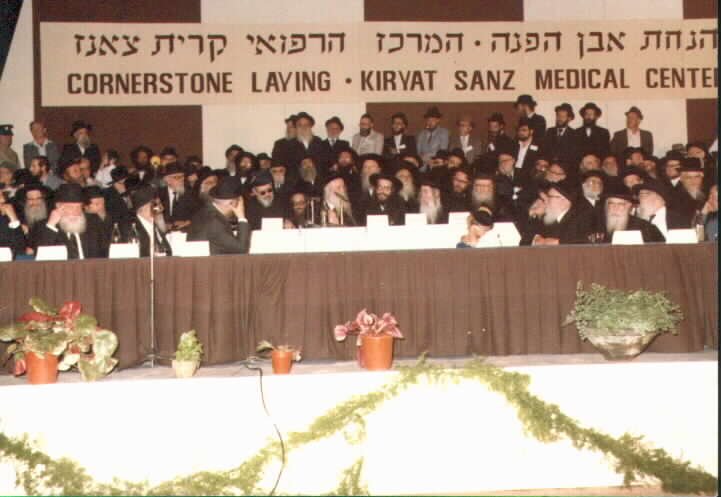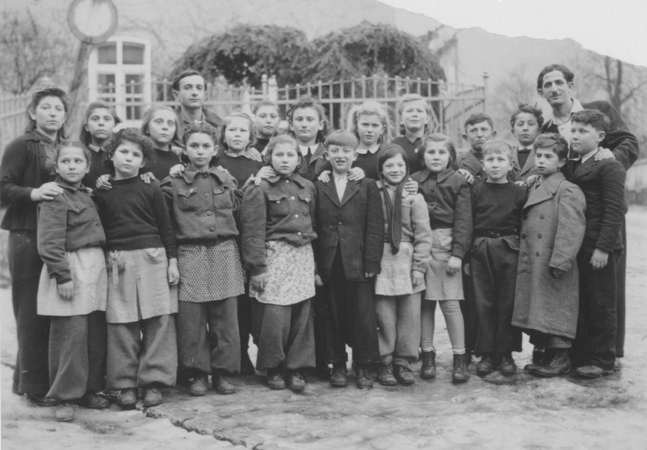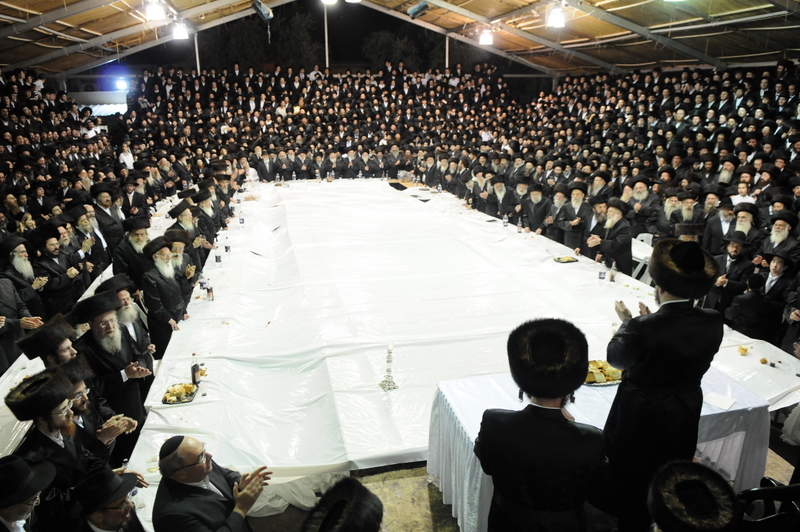|
Föhrenwald
Föhrenwald () was one of the largest displaced persons camps in post-World War II Europe and the last to close, in 1957. It was located in the section now known as Waldram in Wolfratshausen in Bavaria, Germany. The camp facilities were originally built in 1939 by IG Farben as housing for its employees at the several munitions factories that it operated in the vicinity. During the war it was used to house slave laborers. In June 1945, the camp was appropriated by the US Army administration of postwar Germany's American sector, for the purpose of housing international refugees. The camp's initial population comprised refugees of Jewish, Yugoslavian, Hungarian, and Baltic origin. On 3 October 1945 General Dwight D. Eisenhower ordered that Föhrenwald be made an exclusively Jewish DP camp, after he had found living conditions at the Feldafing DP camp unacceptable. From 1946 to 1948, Föhrenwald grew to become the third largest DP camp in the American sector, after Feldafing ... [...More Info...] [...Related Items...] OR: [Wikipedia] [Google] [Baidu] |
Henry Cohen (civil Servant)
Henry Cohen (June 5, 1922 – January 14, 1999) was appointed in 1946 the director of Föhrenwald, the third-largest Displaced Persons camp in the American sector of post-World War II Germany. A native of New York City and a child of Jewish immigrants from Lithuania, Cohen was a graduate of City College of New York. During World War II, he served as an infantryman in the U.S. Army. He later served as research director of the New York City Planning Department and as Deputy City Administrator under Mayor Robert F. Wagner, Jr. Later, he was First Deputy Administrator of the New York Human Resources Administration under Mayor John Lindsay. After leaving the city government, Cohen became the founding Dean of the Milano School of Management, Policy, and Environment at The New School. Early life Cohen was born on the Lower East Side in New York City of parents who immigrated from Iwyea shtetl near Vilna. He graduated from junior high school P.S. 149 and Thomas Jefferson Hig ... [...More Info...] [...Related Items...] OR: [Wikipedia] [Google] [Baidu] |
Wolfratshausen
Wolfratshausen () is a town of the district of Bad Tölz-Wolfratshausen, located in Bavaria, Germany. The town had a population of 19,033 as of 31 December 2019. History The first mention of "Wolveradeshusun" appears in documents from the year 1003. About 100 years later, Otto II, the Graf of Deißen-Andechs, built a castle on a hill overlooking the valley. The castle was destroyed on 7 April 1734 when lightning struck the tower where gunpowder was stored. Stones from the ruins were transported to Munich where they were used to build the Residenz. From 1280 the town was designated a market town. In 1286, Conrad Nantwein, a pilgrim from Northern Germany, was arrested and burned at the stake in Wolfratshausen. Pope Boniface VIII canonized Nantwein as St. Nantovinus in 1297. By the 15th century, the Loisach and Isar rivers were used for water transport, especially logging. River travel continued and rafts operated between Wolfratshausen and Munich. During World War II, a forced-l ... [...More Info...] [...Related Items...] OR: [Wikipedia] [Google] [Baidu] |
Yekusiel Yehudah Halberstam
Yekusiel Yehudah Halberstam (January 10, 1905 – June 18, 1994) was an Orthodox rabbi and the founding rebbe of the Sanz-Klausenburg Hasidic dynasty. Halberstam was one of the youngest rebbes in Europe, leading thousands of followers in the town of Klausenburg, Romania, before World War II. His wife, eleven children and most of his followers were murdered by the Nazis while he was incarcerated in several concentration camps. After the war, he moved to the United States and later Israel. Halberstam rebuilt Jewish communal life in the displaced persons camps of Western Europe. He also re-established his dynasty in the United States and Israel. Halberstam founded a Haredi neighborhood in Israel and a Sanz community in the United States. Additionally, Halberstam established a hospital in Israel that followed Jewish law. He also started a new family after a second marriage and the birth of seven more children. Early life Yekusiel Yehudah Halberstam was born in 1905 in the town o ... [...More Info...] [...Related Items...] OR: [Wikipedia] [Google] [Baidu] |
Sh'erit Ha-Pletah
Sh'erit ha-Pletah is a Hebrew term for Jewish Holocaust survivors living in Displaced Persons (DP) camps, and the organisations they created to act on their behalf with the Allied authorities. These were active between 27 May 1945 and 1950–51, when the last DP camps closed. he, שארית הפליטה, ''Sh'erit ha-Pletah'' means surviving remnant, and is a term from the Book of Ezra and 1 Chronicles (; ). A total of more than 250,000 Jewish survivors spent several years following their liberation in DP camps or communities in Germany, Austria, and Italy, since they could not, or would not, be repatriated to their countries of origin. The refugees became socially and politically organized, advocating at first for their political and human rights in the camps, and then for the right to emigrate to the countries of their choice, preferably British-ruled Mandatory Palestine, the USA and Canada. By 1950, the largest part of them did end up living in those countries; meanwh ... [...More Info...] [...Related Items...] OR: [Wikipedia] [Google] [Baidu] |
Displaced Persons Camps In Post-World War II Europe
Displaced may refer to: * Forced displacement, the involuntary movement of people from their home * ''Displaced'' (2006 film), a 2006 British feature film produced by Skylandian Pictures * ''Displaced'' (2010 film), a 2010 American documentary directed by Idil Ibrahim * "Displaced" (''Star Trek: Voyager''), an episode of ''Star Trek: Voyager'' {{disambiguation ... [...More Info...] [...Related Items...] OR: [Wikipedia] [Google] [Baidu] |
UNRRA
United Nations Relief and Rehabilitation Administration (UNRRA) was an international relief agency, largely dominated by the United States but representing 44 nations. Founded in November 1943, it was dissolved in September 1948. it became part of the United Nations in 1945. Its purpose was to "plan, co-ordinate, administer or arrange for the administration of measures for the relief of victims of war in any area under the control of any of the United Nations through the provision of food, fuel, clothing, shelter and other basic necessities, medical and other essential services". Its staff of civil servants included 12,000 people, with headquarters in New York. Funding came from many nations, and totalled $3.7 billion, of which the United States contributed $2.7 billion; Britain, $625 million; and Canada, $139 million. UNRRA cooperated closely with dozens of volunteer charitable organizations, who sent hundreds of their own staff to work alongside UNRRA. In operation for only four ... [...More Info...] [...Related Items...] OR: [Wikipedia] [Google] [Baidu] |
Zionist Youth Movement
A Zionist youth movement ( he, תנועות הנוער היהודיות הציוניות ''tnuot hanoar hayehudiot hatsioniot'') is an organization formed for Jewish children and adolescents for educational, social, and ideological development, including a belief in Jewish nationalism as represented in the State of Israel. Youth leaders in modern youth movements use informal education approaches to educate toward the movement's ideological goals. History Most Zionist youth movements were established in Eastern Europe in the early twentieth century, desiring the national revival of the Jewish people in their own homeland, and soon formed an active and integral part of the Zionist movement. All emphasised aliyah (emigration to the Land of Israel) and community, with many also focussing on a return to nature. Blau-Weiss is considered by some to have been the first Zionist youth movement. Established in Germany in 1912, its youth leaders were inspired by the culture of outings and ... [...More Info...] [...Related Items...] OR: [Wikipedia] [Google] [Baidu] |
Mandatory Palestine
Mandatory Palestine ( ar, فلسطين الانتدابية '; he, פָּלֶשְׂתִּינָה (א״י) ', where "E.Y." indicates ''’Eretz Yiśrā’ēl'', the Land of Israel) was a geopolitical entity established between 1920 and 1948 in the Palestine (region), region of Palestine under the terms of the League of Nations Mandate for Palestine. During the First World War (1914–1918), an Arab uprising against Ottoman Empire, Ottoman rule and the British Empire's Egyptian Expeditionary Force under General Edmund Allenby drove the Ottoman Turks out of the Levant during the Sinai and Palestine Campaign. The United Kingdom had agreed in the McMahon–Hussein Correspondence that it would honour Arab independence if the Arabs revolted against the Ottoman Turks, but the two sides had different interpretations of this agreement, and in the end, the United Kingdom and French Third Republic, France divided the area under the Sykes–Picot Agreementan act of betrayal in the eyes of ... [...More Info...] [...Related Items...] OR: [Wikipedia] [Google] [Baidu] |
Hasidic Judaism
Hasidism, sometimes spelled Chassidism, and also known as Hasidic Judaism (Ashkenazi Hebrew: חסידות ''Ḥăsīdus'', ; originally, "piety"), is a Jewish religious group that arose as a spiritual revival movement in the territory of contemporary Western Ukraine during the 18th century, and spread rapidly throughout Eastern Europe. Today, most affiliates reside in Israel and the United States. Israel Ben Eliezer, the " Baal Shem Tov", is regarded as its founding father, and his disciples developed and disseminated it. Present-day Hasidism is a sub-group within Haredi Judaism and is noted for its religious conservatism and social seclusion. Its members adhere closely both to Orthodox Jewish practice – with the movement's own unique emphases – and the traditions of Eastern European Jews. Many of the latter, including various special styles of dress and the use of the Yiddish language, are nowadays associated almost exclusively with Hasidism. Hasidic thought draws heavi ... [...More Info...] [...Related Items...] OR: [Wikipedia] [Google] [Baidu] |
Klausenberg (Hasidic Dynasty)
Klausenburg, also known as Sanz-Klausenburg, is a Hasidic dynasty that originated in the Transylvanian city of Cluj-Napoca (german: Klausenburg, hu, Kolozsvár), today in Romania. At the behest of Rabbi Yekusiel Yehudah Halberstam, Klausenburger Rebbe from 1927–1994, the movement was split into two separate movements after his death, headed by his two sons. The Sanz-Klausenburger Hasidim are located in Borough Park, New York City, while the Sanzer Hasidim are based in Kiryat Sanz, Netanya, Israel. There are also followings in Los Angeles, California; Jerusalem; Stamford Hill, London; Antwerp; and Union City, New Jersey, and in the USA, in Borough Park, Williamsburg, Monsey, and Lakewood. Sanz-Klausenburg rabbinical lineage The Klausenburger Rebbes are descended from Rabbi Chaim Halberstam of Sanz, who was a disciple of Rabbi Naftoli Tzvi of Ropshitz. Rabbi Naftoli was a disciple of Rebbe Elimelech of Lizhensk author of ''Noam Elimelech''. Rebbe Elimelech was a discip ... [...More Info...] [...Related Items...] OR: [Wikipedia] [Google] [Baidu] |
Torah
The Torah (; hbo, ''Tōrā'', "Instruction", "Teaching" or "Law") is the compilation of the first five books of the Hebrew Bible, namely the books of Genesis, Exodus, Leviticus, Numbers and Deuteronomy. In that sense, Torah means the same as Pentateuch or the Five Books of Moses. It is also known in the Jewish tradition as the Written Torah (, ). If meant for liturgic purposes, it takes the form of a Torah scroll (''Sefer Torah''). If in bound book form, it is called '' Chumash'', and is usually printed with the rabbinic commentaries (). At times, however, the word ''Torah'' can also be used as a synonym for the whole of the Hebrew Bible or Tanakh, in which sense it includes not only the first five, but all 24 books of the Hebrew Bible. Finally, Torah can even mean the totality of Jewish teaching, culture, and practice, whether derived from biblical texts or later rabbinic writings. The latter is often known as the Oral Torah. Representing the core of the Jewish spir ... [...More Info...] [...Related Items...] OR: [Wikipedia] [Google] [Baidu] |





